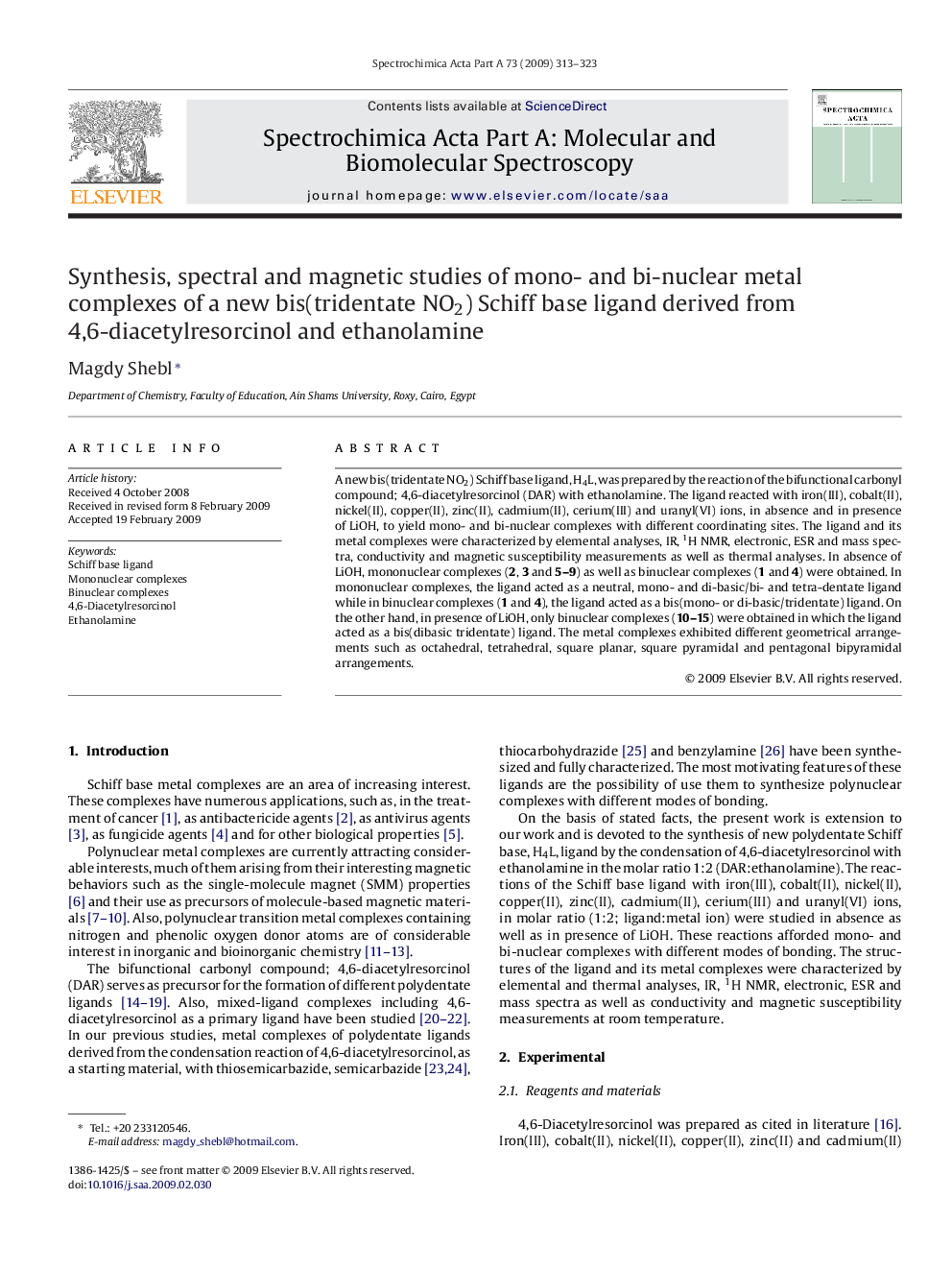| Article ID | Journal | Published Year | Pages | File Type |
|---|---|---|---|---|
| 1237653 | Spectrochimica Acta Part A: Molecular and Biomolecular Spectroscopy | 2009 | 11 Pages |
A new bis(tridentate NO2) Schiff base ligand, H4L, was prepared by the reaction of the bifunctional carbonyl compound; 4,6-diacetylresorcinol (DAR) with ethanolamine. The ligand reacted with iron(III), cobalt(II), nickel(II), copper(II), zinc(II), cadmium(II), cerium(III) and uranyl(VI) ions, in absence and in presence of LiOH, to yield mono- and bi-nuclear complexes with different coordinating sites. The ligand and its metal complexes were characterized by elemental analyses, IR, 1H NMR, electronic, ESR and mass spectra, conductivity and magnetic susceptibility measurements as well as thermal analyses. In absence of LiOH, mononuclear complexes (2, 3 and 5–9) as well as binuclear complexes (1 and 4) were obtained. In mononuclear complexes, the ligand acted as a neutral, mono- and di-basic/bi- and tetra-dentate ligand while in binuclear complexes (1 and 4), the ligand acted as a bis(mono- or di-basic/tridentate) ligand. On the other hand, in presence of LiOH, only binuclear complexes (10–15) were obtained in which the ligand acted as a bis(dibasic tridentate) ligand. The metal complexes exhibited different geometrical arrangements such as octahedral, tetrahedral, square planar, square pyramidal and pentagonal bipyramidal arrangements.
